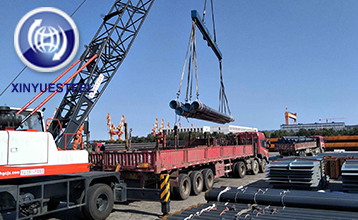High cost and weak demand caused pressure on European steel market
Sep. 19, 2019
Currently, the European steel market is facing pressure from weak demand, market protectionism and continued high prices for iron ore and coking coal. According to the report of the European Iron and Steel Association, the apparent consumption of steel in the EU 28 countries fell by 2.5% year-on-year to 42.6 million tons due to weak manufacturing. Inventory construction in the distribution chain was lower than the same period last year, which exacerbated the negative trend of end-user steel consumption. In view of the downward trend from the first quarter of this year, the European Iron and Steel Association expects that the apparent consumption of EU steel will fall by 0.6% year-on-year in 2019.

In response to the dilemma, the European steel industry is cutting production capacity. Among them, Arcelor Mittal has adjusted its production plan and reduced its production in Europe. It is expected to reduce its production by about 4.2 million tons this year, which involves the company's steel mill production in Poland, Spain, Italy, Germany and France. . Liberty Steel recently announced that it will temporarily cut its newly acquired production of 20% of the Ostra engine in the Czech Republic by slowing production. In addition, the US steel company recently announced that it will cut production at some steel mills in Europe, and it is expected that more steel mills will take measures to reduce production. However, industry analysts believe that production cuts are not enough to boost the weak European steel market.
The risk of higher tariffs imposed by the United States or the United Kingdom on cars produced in the European Union and the negative impact of the WLTP (Global Light Vehicle Testing Program) since the third quarter of 2018 has increased the uncertainty of the future development of the EU automotive industry. The second largest steel consumption sector in the region. In addition, the European automotive industry is facing difficulties related to the Brexit uncertainty and overall economic slowdown in the UK. The contraction of the industry in 2019 seems to be a foregone conclusion and the car production line may be relocated to Japan. According to the European Automobile Manufacturers Association (ACEA), in the first half of 2019, the number of passenger car registrations in the EU was about 8.2 million, a decrease of 3.1% over the same period last year, and almost all major automobile market countries experienced a year-on-year decline in the first half of the year. Including France, Italy, Spain, the United Kingdom and so on. There is currently no agreement on trade negotiations between the United States and Europe, especially in the area of automobile trade. EU car production is expected to decline by 1.4% in 2019.
In addition, there is no indication that the European Commission's import safeguards are contributing to the European market. The European Iron and Steel Association believes that the current design and operation of safeguards is flawed and does not reflect the reality of the EU steel market. The European Iron and Steel Association believes that the European Commission's decision to increase import protection quotas by 5% is risky, but the European Commission plans to gradually increase the overall security quota from 5% to 3% based on recent import data. In addition, the rise in the price of carbon permits has also plagued steelmakers.
In the context of global steel overcapacity and increasing imports, European steel market prices have been on the downtrend for several months. The European Iron and Steel Association warned that due to increased delivery from overseas suppliers, steel consumption by European steel producers has declined, which will weaken its profitability. In the first quarter of this year, shipments from EU steel mills to the EU market fell by 4% compared with the same period of last year. Imports from third countries fell by only 1% year-on-year to 10 million tons, accounting for 23.6% of EU steel demand, nearly four points. One of the levels. However, after the decline in the first quarter, the actual EU steel consumption is expected to stabilize near the beginning of the year for the rest of the year.
Standard & Poor's said that due to the high price of iron ore and coking coal is expected to continue until the end of this year, all steel market participants are increasingly concerned about the full process steel production costs. In addition, iron ore supply pressure will continue until the end of the year.
Standard & Poor's pointed out that trade protectionism has disrupted the global supply chain, and the protectionism of the steel market has complicated the global market situation. The 232-term steel import tariff that the United States began to implement in March 2018 has created a new wave of trade protectionism, which has caused the global steel supply chain to be affected by the trade war.



